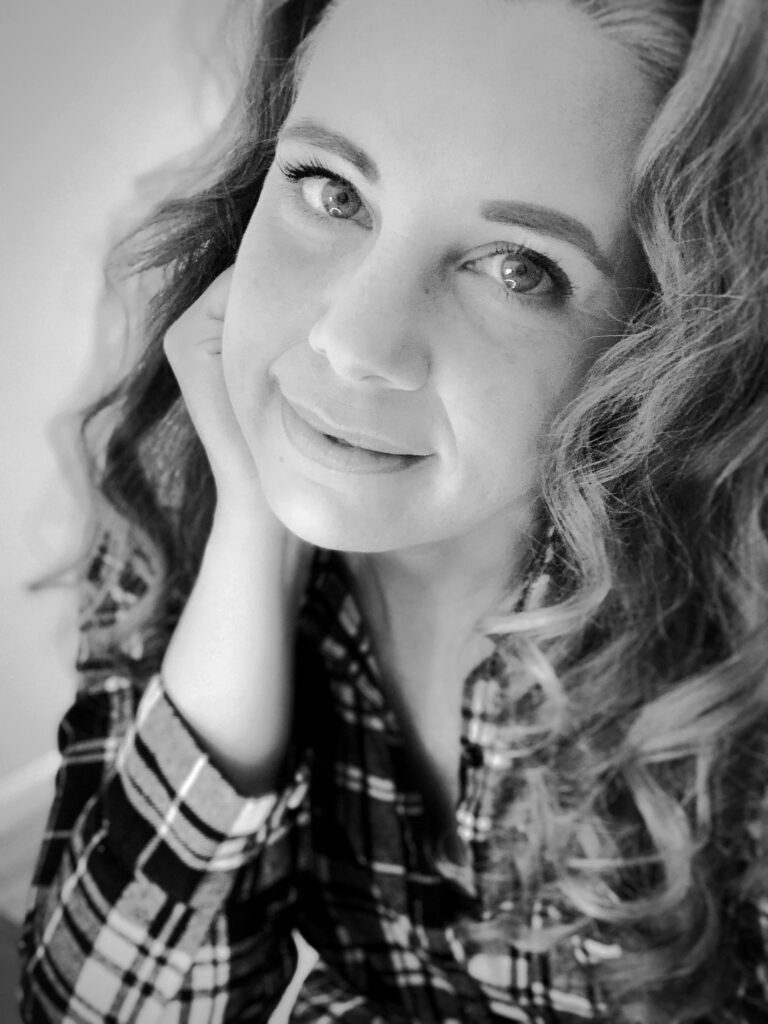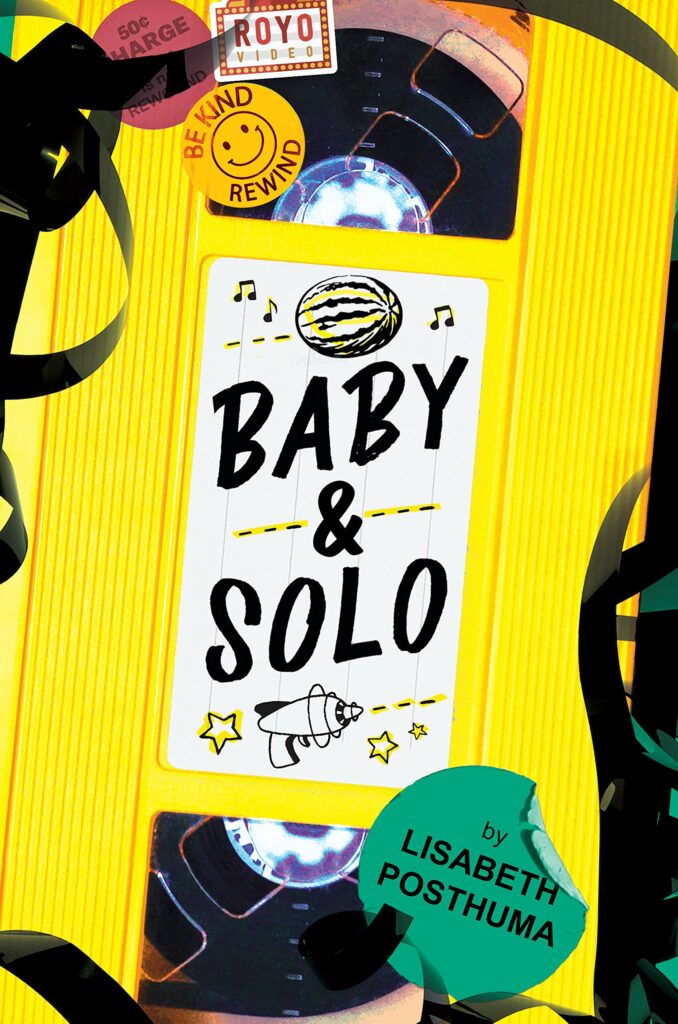Sponsored by Inkyard Press.
When Jenna Dallas and Adam Cole find Colleen O’Dell’s body floating off the shore of their coastal town, the community of Gardiners Bay is shaken. But even more shocking is the fact that her drowning was no accident. As Jenna and Adam search for the truth they soon discover that everyone in Gardiners Bay has a secret. As lies unravel, the truth starts to blur. Only one thing is certain: somebody must take the fall.
Hey YA Readers!
One of the best books — and among the overlooked gems — I read this year was Lisabeth Posthuma’s excellent Baby & Solo. The book, set in the 90s, is a story of growing up a middle class gay white boy in the midwest, and it dives into the stakes of that life during that time. There are a lot of topics thread through the story, and one of them is an abortion narrative.
Given the realities of abortion access in America, and specifically, the lack of access to it in Texas, there’s a lot to remember about how this health care impacts teenagers as much as it does adults. In Texas, Jane’s Due Process is one organization ensuring legal access to reproductive healthcare, including abortions, for teenagers in the state.
As I grappled with talking about abortion and teenagers, I knew a book list wouldn’t be enough. I pulled a list together on my personal blog and in doing so, realized there were likely YA authors who could talk about it in a compelling, thought-provoking way. So it was only natural that I would see if Posthuma would like to lend her voice on abortion in young adult literature.
Without further ado, I’ll leave the words to her.
 |
As a self-admitted ’90s nostalgic, I was thrilled when I stumbled upon full seasons of The Real World on a streaming platform. Like many of the MTV generation, I was obsessed with this show in its original run. Essentially the first reality television series, the concept was novel at the time—seven total strangers from varying backgrounds living together for five months all while every moment of their lives are filmed. It was groundbreaking in concept and in the resulting content. Never before had a TV show for the young adult market spanned so many controversial and relevant social issues from the perspective of those with lived experience. For me personally, it was The Real World, not the real world, where I was first exposed to people who were openly LGBTQIA+. It was also here that my eyes were opened to racial injustice, the AIDS epidemic, and people battling drug and alcohol addiction. And it was here where I was first learned about abortion.
Looking back on growing up in Small Conservative Town, Midwest State, I’m surprised that I made it to age thirteen without someone inculcating me with their strong opinions about abortion. I had heard the word before by that age, but I honestly didn’t know what it was until I watched a Season Two episode of The Real World where a cast member weighs the decision of whether or not to terminate her unplanned pregnancy. Varying viewpoints are civilly shared by her roommates before the woman decides to go through with the abortion, and at the end of the half-hour, she’s shown recovering from the procedure.
At the time, I assumed there was a “correct” choice for this woman to make, or, at least, that I should feel strongly about her options. At thirteen, so much was still riding on my ability to categorize everything into terms of “right” and “wrong.” Kids are conditioned to view the world in that dichotomy, after all, yet, I wasn’t informed enough about the complexities of any “pro” or “anti” stance to choose a side with any conviction. This was long before the word “nuance” would enter into to our cultural vernacular, and without it, there was no way to accurately explain the limbo I felt in when I thought about abortion.
This half-hour of television would end up being my only exposure to an earnest discussion on abortion for many years. It was regarded as revolutionary television when discussed on The Real World, as the subject of abortion was virtually absent from most other media targeting the young adult audience. The topic was all-but banned from my high school (and from many high schools across the country). Regardless of the fact that many young people were being faced with a decision about abortion, including several people I knew personally, it seemed like it was just too taboo a subject to talk about.
A lot has changed in young adult media in the last thirty years. One doesn’t need to look very far these days to find stories with LGBTQIA+ themes, or ones about people struggling with addiction, or highlighting the realities of racial injustice. Scripted and non-scripted television, movies, and YA Lit have finally begun making strides toward greater representation and diversity of their storylines and storytellers. And while there’s definitely been an increase in abortion-focused stories in young adult media in recent decades (including my debut novel Baby & Solo and all of the titles on this Book Riot list from 2015), it’s still rare to come across abortion in a YA novel, despite it being one of the most relevant subjects of the last half-century.
This is a problem.
It’s at best naïve and at worst irresponsible to treat abortion as anomalous when an estimated 1 in 4 women will have one by the time they are forty-five years old—half of which will occur during their young adult years. Knowing abortion affects so many people who make up the young adult demographic, it’s a disservice not to acknowledge the subject’s necessary place in YA media. Though public discourse about abortion continues to be divisive and heated, young adult content creators can provide our audiences with low-stakes avenues through which to wrestle with their difficult feelings about difficult subjects. Realistic fiction is a valuable gateway to rediscovering the lost art of uncertainty, for recognizing the gray within the false narrative of a black-and-white world. In fact, it might be the most fertile soil for empathy to grow in.
I’m learning that the hypothetical is the safest space to feel unsure. It’s seemingly the only place where there’s no urgency to form the “right” opinion. It’s where people can privately challenge their own thoughts, explore nuances, and ultimately grow in their understanding about the issues that affect them. I wish that at thirteen I’d had more safe places to contemplate issues like abortion, but I didn’t. As an adult, however, I’m grateful that I can join with other writers who want change things for this generation’s YA audience. I am hopeful that as abortion continues to be a relevant subject, even more authors will seize the opportunity to create these spaces for teens, too.
Lisabeth Posthuma was a high school teacher, a photographer, and most importantly, a video rental clerk before becoming a writer. She holds an English degree from one of those really expensive private liberal arts colleges that no one can afford (including her). She grew up obsessed with teen soaps, which her therapist says explains a lot, and likes to brag about that one time she attended the cast party for The OC. Orange is her favorite color because in first grade no one chose it, and she felt sorry for it. She currently lives in Michigan where the winters are too long.
Thank you, Lisabeth, and I deeply appreciate the idea of fiction being a safe space for teens to navigate those gray areas. Whether or not abortion is a choice they agree with for themselves or others, the reality is abortion is healthcare and should not be outlawed. YA fiction provides such an outstanding avenue for exploring the topic and more, for helping both young people and those who care for them, understand why this healthcare is a legal right.
Big thanks for reading today, YA fans, and we’ll see you on Thursday.
— Kelly Jensen, @heykellyjensen on Instagram and person who will keep pushing Baby & Solo to readers this year and beyond. Yes, those are nods to Han Solo and Dirty Dancing, both part of the story’s setting in a video rental store.

